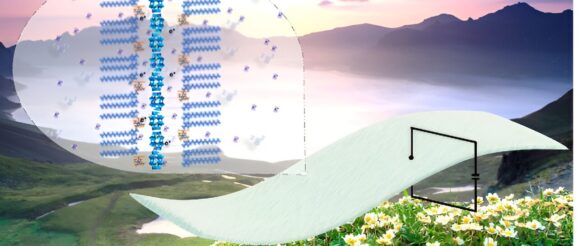Power from natural atmospheric humidity – Innovation Toronto

Scientists have found a way to generate electricity from the moisture that’s naturally in the air. They’ve built a generator that can collect this humidity and turn it into electric power.
A team of researchers created this generator using tiny materials called polyoxometalates (POMs). They were the first to design a humidity generator with these materials. POMs are special because they can form structures that capture moisture from the air, and they’re also stable and environmentally friendly.
The researchers made clusters of POMs and put them into thin layers to create the generator. These layers have tiny pores that can work in different levels of humidity, from 10 percent to 90 percent. The generator they built can produce a small voltage and works continuously in almost all natural environments.
The way it works is that the tiny POM clusters absorb moisture from the air, and this moisture forms a pattern inside the material, which creates power. The generator is stable and can keep working to make power continuously.
The team learned that this generator can effectively gather the moisture from the air and turn it into electric signals. They believe that this is a new way to make use of this type of low-value energy, and it also opens up new areas of research for these special POM materials.
In the past, there’s been a need to find ways to use the low-value energy that’s found in nature. Some devices have been made to collect and use this energy, but they haven’t always worked well because this type of energy can be inconsistent. But this new humidity generator is the first to produce continuous power.
The generator they made could be used in many ways, like detecting how people breathe, monitoring environmental humidity, powering electrical appliances, and meeting various electricity needs.
The big takeaway from this research is that they’ve made continuous power from the humidity in the air by designing and changing POMs materials. They understand how it works thanks to the special characteristics of these materials.
Looking to the future, the researchers want to make the humidity power generation even more efficient by finding and improving the materials they use. Their ultimate goal is to use these generators to help with energy and environmental sustainability.
On a recent Wednesday, when outdoor temperatures reached above 90 degrees and felt even hotter with the humidity, Car 1859 on the No. 1 line was one of those cars. It was not the first time.
Raphael, Jo White, Peta J and van Cuylenburg, Kitty 2021. Science and Drama: Contemporary and Creative Approaches to Teaching and Learning. p. 1. Gumerova, Nadiia I. and Rompel, Annette 2021.
